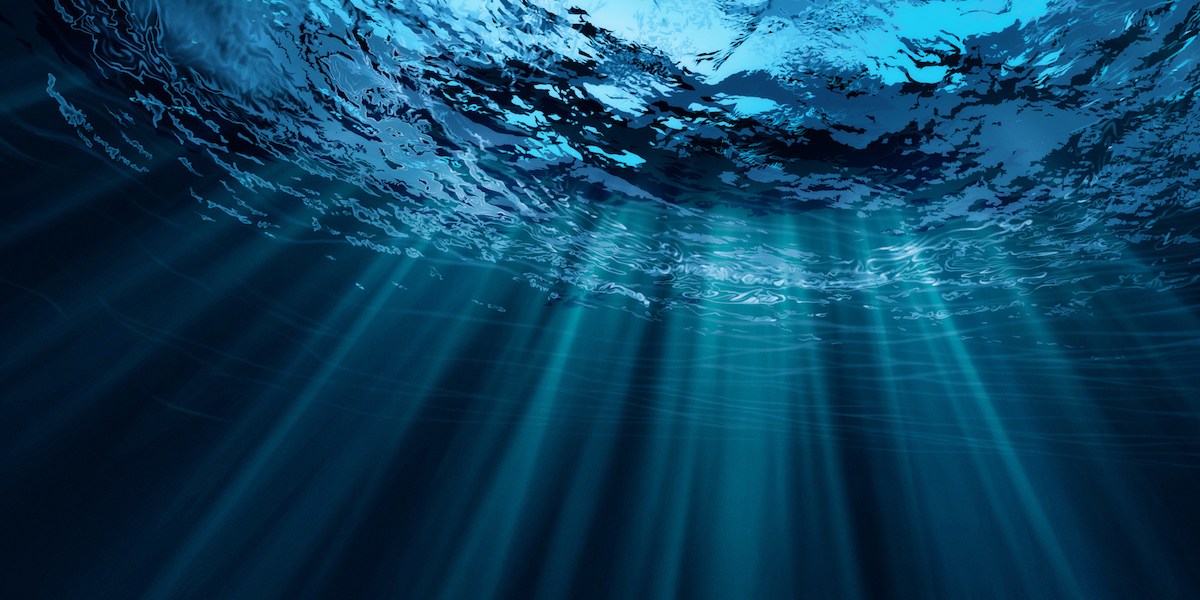Blue water thinkingBlue water thinkingMeasuring the impact of global innovation on ocean sustainability with The Blue Technology Barometer.by MI...
Published on by Water Network Research, Official research team of The Water Network

Blue water thinking
Measuring the impact of global innovation on ocean sustainability with The Blue Technology Barometer.
by MIT Technology Review Insightsarchive page
June 2, 2021
Sponsored Content
In association withCanada's Ocean Supercluster, Morgan Stanley, and Infosys
The names of many of the new companies and technologies created to combat the effects of climate change on marine ecosystems can evoke thrilling acts of derring-do on the high seas. WaveKiller uses compressed air systems to create “walls” of bubbles up to 50 feet thick, to guard against erosion and contain waste and oil spills. The Inceptor is a solar-powered barge deployed by the Dutch nongovernmental organization Ocean Cleanup along rivers in Southeast Asia to gather tons of waste before it hits the sea. Saildrone and WasteShark build and deploy fleets of autonomous drones to ply the oceans, gathering meteorological and marine data in the former case and trash in the latter.
This sample of (often menacingly-named) technologies represents the increasingly diverse approaches to combat marine degradation—diversity which is desperately needed, as climate change wages war on the health of the world's oceans on many different fronts. Carbon emission levels are warming air and water temperatures, which in turn are melting polar ice sheets so quickly that NASA estimates global sea levels will rise half a centimeter annually through 2100.
Addressing the challenges of warming, rising seas is essential for global sustainability on multiple fronts, but two are particularly stark. One is coastal habitats: as the world’s coastlines recede and are degraded, the homes and livelihoods of the one-in-three of the world's people who live along its coasts will likely be irrevocably changed in this generation. The second is global food supplies. Overlooking the economic setback caused by the global covid-19 pandemic, exponential growth in global trade and protein consumption has pushed ocean-going transportation and commercial fishing to increasingly unsustainable levels.
Growing consumer demand and systemic failures to recycle and manage solid waste also add 8 million tons of plastics to the 150 million tons in our oceans today, according to the Ocean Conservancy. Plastic ocean waste is both an immediately visceral sustainability challenge—impacting a variety of industries from aquaculture to tourism—and a perniciously long-tailed threat to global ecology, as ocean tides break down plastic waste into microplastics that seep into food chains. This is one area where a broad portfolio of technology-enabled responses are being scaled up in response, from the aforementioned walls of bubbles and fleets of waste-gobbling drones, to the creation of new polymers that dissolve in seawater, to managing information and insight around maritime commercial activities through sensors and AI-enabled analytics.
But much more—more technology deployment, more investment in innovation, more regulation and government oversight—is needed to effectively mitigate the rise of ocean plastics, and the myriad other threats to the world’s oceans.
In this context, MIT Technology Review Insights, the custom content division of MIT Technology Review, is embarking on a global research initiative to assess how new “blue economy” technologies and solutions are being deployed to clean up our oceans, reduce sea-related carbon emissions, and increase sustainability in maritime industries. This project will culminate with the publication of the “Blue Technology Barometer,” which will quantify where amongst the world’s coastal economies relevant technologies and solutions are being created and effectively deployed to address challenges ranging from reducing carbon emissions in container shipping and port logistics to combating illegal, unreported, and unregulated activities.
The Barometer will evaluate these efforts in over 50 coastal countries and territories globally, and rank them using an econometric model anchored in an extensive set of data and forecasts from dozens of sources. This model and research methodology will be based on the work MIT Technology Review Insights has done to create the Green Future Index—our foundational global ranking of decarbonization progress and potential—and will form an important complement to our expanding portfolio of holistic research projects that examine the role technology plays in advancing sustainable development.
Attached link
https://www.technologyreview.com/2021/06/02/1025623/blue-water-thinkingTaxonomy
- Climate Change
- Climate Change